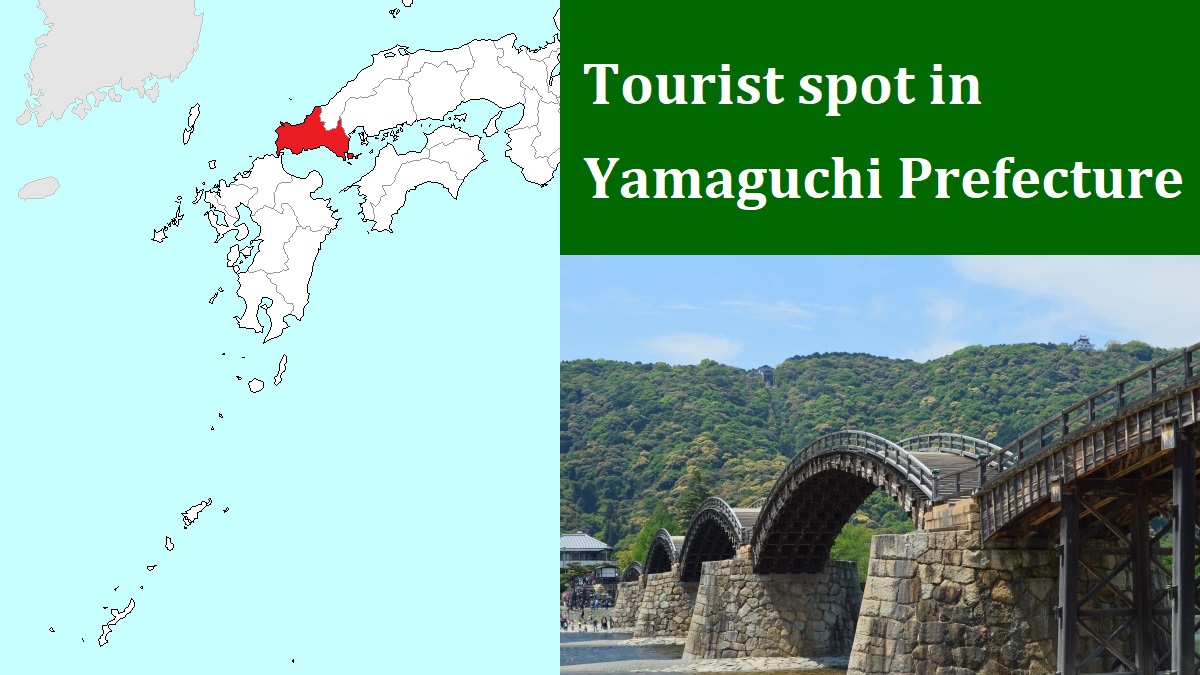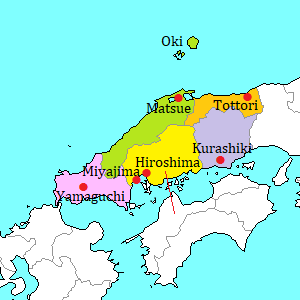Yamaguchi city [山口]
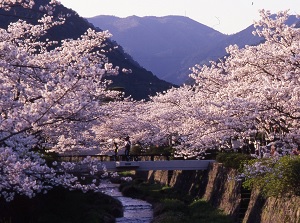
Ichinosaka River in Yamaguchi city
Photo: Yamaguchi Prefectural Tourism Federation
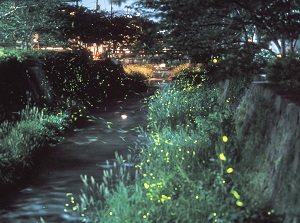
Fireflies in Ichinosaka River
Photo: Yamaguchi Prefectural Tourism Federation
Yamaguchi city is located near the center of Yamaguchi Prefecture, and is the prefectural capital.
It is the city of politics and education rather than economy in this prefecture.
In the 14th to 16th centuries, Ôuchi family governed this region.
A great civil war occured in Kyoto in 1467, then they received many people of culture who escaped from Kyoto.
So the culture in Kyoto prospered in this city, and Yamaguchi city was called "Western Kyoto".
Also, Francisco de Xavier (1506-1552) who was the first missionary of Christianity to Japan performed missionary work in Yamaguchi in 1551.
And the Japan's first Christmas party was held in Yamaguchi in 1552.
From the late 16th century, Môri family governed this area.
But they built the castle to govern in Hagi city located about 40 km north of Yamaguchi city.
Therefore, Yamaguchi city lost the function of the center of politics.
Instead, this city had been the key junction between Hagi and Seto Inland Sea side for about 260 years.
In 1864, just before the end of feudal era, the government of this prefecture was moved from Hagi to Yamaguchi, again.
From the era down to modern times, Yamaguchi has been the central city of the politics in this prefecture.
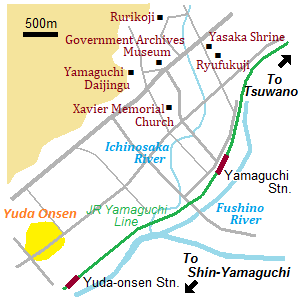
The central area of the city is located about 15 km inland and in a valley formed by Fushino River.
It is a small town.
Fushino River flows on the south side of the town, and Ichinosaka River (一の坂川) which is a tributary of Fushino River flows through the central area.
When Ôuchi family constructed the city in the 14th century, they used this river to resemble Kamo River in Kyoto.
The cherry blossoms along this river are beautiful in spring, and many fireflies fly in the evening in early summer.
There is no route bus in Yamaguchi city.
To visit the sightseeing spots, we must use taxi or walk from the station.
Rurikoji temple (瑠璃光寺)
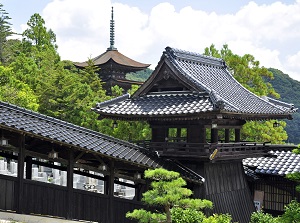
Rurikoji in Yamaguchi city
Photo: Yamaguchi Prefectural Tourism Federation
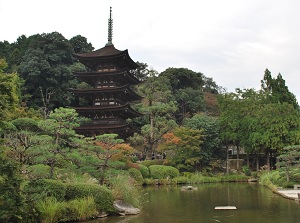
Five-story pagoda in Rurikoji
Photo: Yamaguchi Prefectural Tourism Federation
Rurikoji is a Soto Zen temple located about 2.5 km north of JR Yamaguchi station, and is at the foot of the mountains.
The original temple was founded in the end of the 14th century by Ôuchi family, and the five-story pagoda was built in 1442.
It is the symbol of Yamaguchi city.
The pagoda is 31.2 meters high, and is designated as a national treasure.
It is one of the important five-story pagodas along with Horyuji's in Nara and Daigoji's in Kyoto.
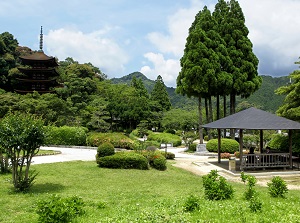
Kozan Park in Yamaguchi city
Photo: Yamaguchi Prefectural Tourism Federation
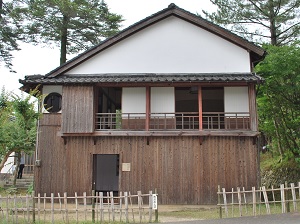
Chinryutei in Kozan Park
Photo: Yamaguchi Prefectural Tourism Federation
There is Kôzan Park (香山公園) around this temple.
It has some historic spots such as Kozan-bosho (香山墓所, Tombs of the lords), Chinryutei (枕流亭, a house where the samurais had a meeting to overthrow Edo Government in 1867).
Yamaguchi Prefecture Government Archives Museum (山口県政資料館)
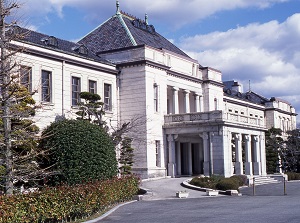
Yamaguchi Prefecture
Government Archives Museum
Photo: Yamaguchi Prefectural Tourism Federation
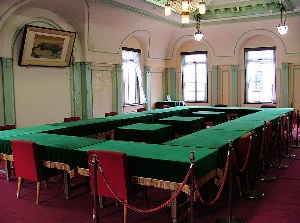
Inside of Government Archives Museum
Photo by Railstation.net
It is located about 1.5 km north of JR Yamaguchi station.
This museum consists of former Yamaguchi Prefecture Government office building and prefectural assembly house, and is in the site of current Yamaguchi Prefectural Government Office.
Both Western-style buildings were completed in 1916, and are designated as national important cultural properties.
They had been used until 1984, and are a museum now.
Yamaguchi Daijingu shrine (山口大神宮)
Yamaguchi Daijingu is a Shinto shrine, and is located about 0.3 km west of Yamaguchi Prefectural Government Office.
This shrine was founded as a branch shrine of Ise Shrine by Ôuchi family in 1520.
Like Ise Shrine, this shrine consists of Naikû (Inner shrine) and Gekû (Outer shrine).
In Edo Period (1603-1868), many worshippers who were too far to go to Ise visit this shrine, because of the only branch shrine of Ise Shrine in Japan.
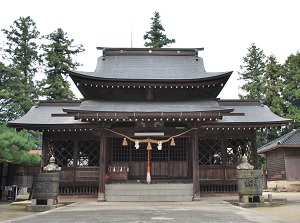
Yasaka Shrine in Yamaguchi city
Photo: Yamaguchi Prefectural Tourism Federation
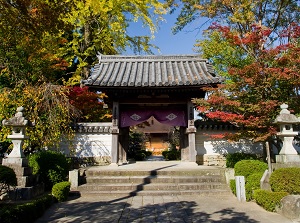
Entrance of Ryufukuji
Photo: Yamaguchi Prefectural Tourism Federation
Yasaka Shrine (八坂神社)
Yasaka Shrine is a Shinto shrine, and is located about 0.7 km east of Yamaguchi Prefectural Government Office.
This shrine was founded as a branch shrine of Yasaka Shrine in Kyoto by Ôuchi family in 1369.
The main shrine was built in 1519.
Ryûfukuji temple (龍福寺)
Ryûfukuji is a Soto Zen temple located near Yasaka Shrine.
It was founded by Ôuchi family in 1206.
Originally, it was a temple of Rinzai Zen sect, but changed to Soto sect in 1454.
The temple was destroyed by fire in 1881.
After that, when the temple was rebuilt, Shakado (main temple) was moved from the other temple.
It is said that Shakado was built in 1479.
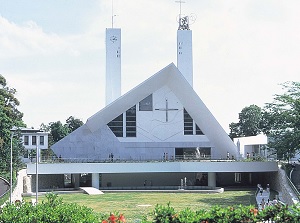
Yamaguchi Xavier Memorial Church
Photo: Yamaguchi Prefectural Tourism Federation
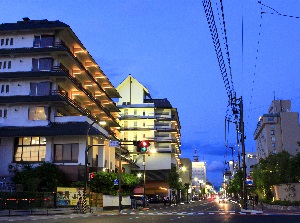
Yuda Onsen
Photo: Yamaguchi Prefectural Tourism Federation
Yamaguchi Xavier Memorial Church
This is a Catholic Church located about 0.8 km south of Yamaguchi Prefectural Government Office.
The original church was built in 1952 to commemorate the 400 anniversary of Francisco de Xavier's visit to Yamaguchi.
The church was a beautiful traditional building which was built in the image of Xavier Castle in Pamplona in Spain (his birthplace).
But it was destroyed by fire in 1991, then new church was built in 1998.
The new church was designed by an Italian priest and an Italian architect, and the design is novel.
Yuda Onsen (湯田温泉)
Yuda Onsen is a hot spring resort, and is located about 3 km west of JR Yamaguchi station.
It is said that a priest found the hot spring where a wounded white fox was bathing in the 15th century.
So, white fox is the symbol of the resort.
There are several hotels and ryokans, and five foot bathes are in the resort area.
It is the most major hot spring resort on the Seto Inland Sea side of Chugoku Region.
Steam locomotive train "Yamaguchi"
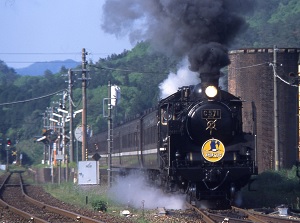
Photo: Yamaguchi Prefectural Tourism Federation
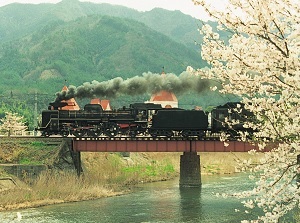
Photo: Yamaguchi Prefectural Tourism Federation
JR Yamaguchi Line runs from Shin-Yamaguchi through this city to the Sea of Japan side.
Yamaguchi station is the central station of the town.
To preserve old steam locomotive in a condition to run, the train pulled by a steam locomotive has been operated as a sightseeing train since 1979.
It makes one round trip a day between Shin-Yamaguchi and Tsuwano (62.9 km), on Saturday, Sunday and Japanese national holidays from mid-March to November.
To enjoy the tour by this train, advance reservations are required.
It is a rapid train of JR, so Japan Rail Pass is available.
How to get here
By San-yo Shinkansen, to Shin-Yamaguchi, about 31 to 34 minutes from Hiroshima, about 2 hours from Shin-Osaka, about 4.5 hours from Tokyo.
Or, from Yamaguchi Ube Airport, by route bus, about 34 minutes to Shin-Yamaguchi station.
Change to Yamaguchi Line at Shin-Yamaguchi.
By local train of Yamaguchi Line, about 23 minutes to Yamaguchi.

